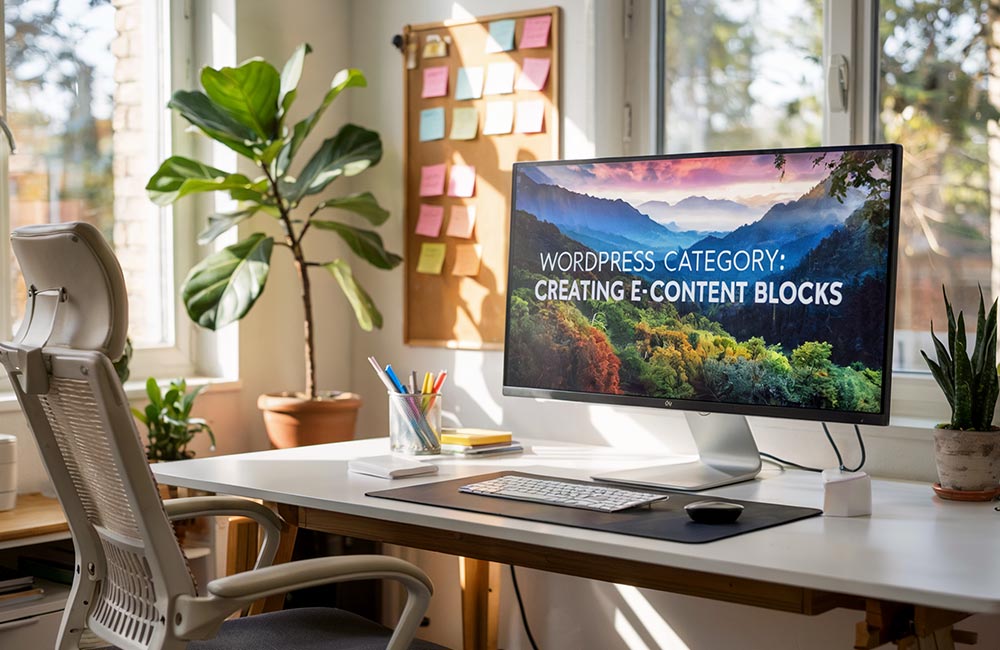 Boosting Your Online Visibility by Optimizing Contents for SEO
Boosting Your Online Visibility by Optimizing Contents for SEO
Optimizing e-contents for SEO (Search Engine Optimization) is essential to ensure your content reaches its target audience. Whether you’re publishing blog posts, articles, or other forms of digital content, e-contents optimization for SEO helps increase your content’s visibility, improve search rankings, and drive more traffic to your site.
Effective e-content optimization for SEO involves a blend of strategies that enhance the quality of your content and improve its discoverability on search engines like Google
Understanding e-Contents and Their Role in SEO
Before diving into the specifics of e-contents optimization for SEO, let’s first define what e-contents are. E-contents refer to any form of digital content that is shared online. This can include blog posts, articles, videos, infographics, podcasts, and other multimedia content. The goal of creating such content is to provide value to users while also ensuring it is easily discoverable by search engines.
Search engines rank content based on numerous factors, including its relevance to user queries, the use of keywords, and the quality of the content. Therefore, SEO for e-contents is crucial for increasing online visibility, driving organic traffic, and improving user engagement.
In this article, we’ll explore proven techniques for optimizing e-content for SEO, focusing specifically on blog posts. These techniques can be applied to any form of e-content to help you achieve higher rankings and improve your overall online presence.
Key Steps to Optimize e-Content Blog Posts for SEO
- Title Optimization: Crafting SEO-Friendly Headlines
The title of your e-content plays a critical role in SEO. A clear, concise, and keyword-rich title helps search engines understand the content of your post, making it more likely to appear in search results.
To ensure that your title is optimized for search engines:
- Incorporate relevant keywords: Ensure that your title includes the primary keyword, such as “e-Contents Optimization for SEO.” This tells search engines exactly what your content is about.
- Use H1 tags for titles: Using H1 tags signals to search engines that this is the main headline of the page.
- Be specific and descriptive: Titles that are specific attract more targeted traffic. For example, instead of using a vague title like “SEO Tips,” use “Effective e-Contents Optimization for SEO to Boost Rankings.”
- Meta Tags: Enhancing Visibility with Metadata
Meta tags, including meta descriptions and meta keywords, are vital for SEO because they help search engines understand your content and display it appropriately in search results. Meta descriptions provide a brief preview of what your content is about, and they appear underneath the title in search engine results.
To optimize your meta tags:
- Craft a compelling meta description: Keep your meta description between 150-160 characters, ensuring it clearly summarizes your content while incorporating primary keywords.
- Avoid keyword stuffing: Focus on creating a natural and engaging description rather than overstuffing keywords. Too many keywords can negatively impact readability and SEO.
- Use SEO plugins: If you’re using a platform like WordPress, plugins like Yoast SEO can guide you in optimizing your meta tags in real time.
- Header Tags: Organizing Content for Readability and SEO
Header tags (H2, H3, etc.) are essential for structuring your content in a way that is both user-friendly and SEO-friendly. These tags break up your content into manageable sections, making it easier for users to read and for search engines to understand.
To optimize header tags for SEO:
- Use H2 tags for main subheadings: These helps search engines understand the core structure of your content.
- Use H3 tags for subsections: Subheadings (H3) help further break down your content into digestible parts, enhancing user experience.
- Incorporate keywords in headers: Where relevant, add your primary or secondary keywords in header tags to emphasize the relevance of each section to the topic at hand.
- Keyword Optimization: Maintaining Balance Between SEO and Readability
Keyword optimization is one of the cornerstones of SEO. However, it’s essential to find the right balance between optimizing for keywords and maintaining readability. Overloading your content with keywords can result in poor user experience and may be penalized by search engines.
To optimize keyword usage in your e-contents:
- Aim for a keyword density of 1-2%: This ensures that keywords appear naturally without overstuffing.
- Use keyword variations and long-tail keywords: Instead of repeating the same keyword, include synonyms and related terms like “e-content optimization” or “SEO for digital content.”
- Focus on user experience: Ensure your content reads naturally and is valuable to the audience. Search engines prioritize content that is both relevant and engaging.
- Internal and External Linking: Building Authority and Relevance
Both internal and external linking are essential for improving your content’s SEO. Internal links connect your blog post to other relevant content on your site, while external links lead to authoritative sources that support your content.
To optimize linking for SEO:
- Internal linking: Link to other blog posts, product pages, or resources on your website to improve site navigation, encourage deeper engagement, and signal to search engines that your website has valuable interconnected content.
- External linking: Link to high-authority external websites, such as credible research papers or industry leaders. This boosts the trustworthiness of your content.
- Media Optimization: Enhancing Engagement and SEO
Incorporating multimedia elements like images, videos, and infographics can enhance the overall user experience, increasing engagement and improving SEO. However, media files that are too large can negatively impact your page load speed, which is a key ranking factor.
To optimize media for SEO:
- Optimize image size: Compress images using tools like TinyPNG or ImageOptim to reduce file size without losing quality.
- Add alt text to images: Alt text helps search engines understand the content of your images. Include relevant keywords where appropriate.
- Incorporate video and infographics: Videos and infographics engage users and encourage them to spend more time on your site, signaling to search engines that your content is valuable.
- Social Media Promotion: Driving Traffic and Engagement
Social media is a powerful tool for promoting e-contents and improving SEO. Sharing your content on platforms like Facebook, Twitter, and LinkedIn helps drive traffic to your website and generate backlinks.
To use social media for SEO:
- Share snippets and engaging posts: Create compelling social media posts with brief quotes or highlights from your blog post to encourage clicks.
- Use relevant hashtags: Hashtags like #eContentOptimization, #SEO, or #DigitalMarketing can help your posts reach a targeted audience.
- Encourage social sharing: Add social media sharing buttons to your posts, making it easy for users to share your content with their networks.
- Encouraging User Engagement: Building Community and Authority
Engagement is a critical factor in SEO. When users interact with your content by commenting, sharing, or exploring other posts on your site, it signals to search engines that your content is valuable.
To encourage user engagement:
- Include a Call to Action (CTA): Encourage readers to comment, share, or explore other content on your site.
- Engage with your audience: Respond to comments and questions from readers to foster a sense of community around your content.
- Invite user-generated content: Encourage readers to contribute their thoughts, experiences, or questions related to your topic.
Maximizing the Potential of e-Contents Optimization for SEO
Effective e-contents optimization for SEO is a multifaceted approach that involves strategic keyword usage, content structuring, media optimization, and active promotion. By employing these tactics, you can significantly improve your content’s visibility, drive organic traffic, and enhance user engagement. Whether you’re publishing e-content blog posts or other digital formats, the goal is to create valuable, easily discoverable content that meets the needs of both users and search engines.
In the ever-evolving world of digital marketing, staying up to date with SEO best practices and continually refining your e-contents is key to maintaining strong search engine rankings and achieving long-term online success. Implement these strategies consistently, and watch your content climb the search engine rankings, attracting more traffic and driving greater results for your brand.







